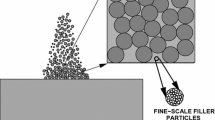Abstract
To combat thermal-induced problems such as residual stress, deformation, and crack, induction heating is introduced into weld-based additive manufacturing process as a controlled thermal intervention. To date, however, numerical simulation of this induction-assisted weld-based additive manufacturing process is still a tough task; for conducting transient thermoelectromagnetic motion, coupling analysis is computationally prohibitive. In this paper, a simulation strategy is devised to address the problem. The coupling analysis is performed only at a typical time to obtain the representative distribution of induction heat, which is then transferred to the thermal analysis of multilayer deposition as a moving heat source. Utilizing this strategy, the effects of real-time induction preheating and postheating on residual stress state are analyzed in comparative simulations. The results show that both induction preheating and postheating lead to more homogeneous heat input and lower residual stresses compared with the case without induction heating.
Similar content being viewed by others
References
Vayre B, Vignat F, Villeneuve F (2012) Metallic additive manufacturing: state-of-the-art review and prospects. Mech Ind 13(2):89–96. doi:10.1051/meca/2012003
Santos EC, Shiomi M, Osakada K, Laoui T (2006) Rapid manufacturing of metal components by laser forming. Int J Mach Tool Manuf 46(12–13):1459–1468. doi:10.1016/j.ijmachtools.2005.09.005
Ding J, Colegrove P, Mehnen J, Ganguly S, Sequeira Almeida PM, Wang F, Williams S (2011) Thermo-mechanical analysis of wire and arc additive layer manufacturing process on large multi-layer parts. Comput Mater Sci 50(12):3315–3322
Amon CH, Beuth JL, Weiss LE, Merz R, Prinz FB (1998) Shape deposition manufacturing with microcasting: processing, thermal and mechanical issues. J Manuf Sci Eng Trans ASME 120(3):656–665. doi:10.1115/1.2830171
Spencer JD, Dickens PM, Wykes CM (1998) Rapid prototyping of metal parts by three-dimensional welding. Proc Inst Mech Eng B J Eng Manuf 212(3):175–182. doi:10.1243/0954405981515590
Clark D, Bache MR, Whittaker MT (2008) Shaped metal deposition of a nickel alloy for aero engine applications. J Mater Process Technol 203(1–3):439–448. doi:10.1016/j.jmatprotec.2007.10.051
Brandl E, Baufeld B, Leyens C, Gault R (2010) Additive manufactured Ti-6Al-4V using welding wire: comparison of laser and arc beam deposition and evaluation with respect to aerospace material specifications. Phys Procedia 5:595–606. doi:10.1016/j.phpro.2010.08.087
Karunakaran KP, Suryakumar S, Pushpa V, Akula S (2010) Low cost integration of additive and subtractive processes for hybrid layered manufacturing. Robot Comput Integr Manuf 26(5):490–499. doi:10.1016/j.rcim.2010.03.008
Xiong XH, Zhang HO, Wang GL, Wang GX (2010) Hybrid plasma deposition and milling for an aeroengine double helix integral impeller made of superalloy. Robot Comput Integr Manuf 26(4):291–295. doi:10.1016/j.rcim.2009.10.002
Mohammadhosseini A, Fraser D, Masood SH, Jahedi M (2013) Microstructure and mechanical properties of Ti–6Al–4V manufactured by electron beam melting process. Mater Res Innov 17(Suppl 2):s106–s112. doi:10.1179/1432891713z.000000000302
Edwards P, Ramulu M (2014) Fatigue performance evaluation of selective laser melted Ti–6Al–4V. Mater Sci Eng A 598:327–337. doi:10.1016/j.msea.2014.01.041
Radaj D (1992) Heat effects of welding: temperature field, residual stress, distortion. Springer Berlin, Berlin, pp 263–265
Brückner F, Lepski D, Beyer E (2007) Modeling the influence of process parameters and additional heat sources on residual stresses in laser cladding. J Therm Spray Technol 16(3):355–373
Mughal MP, Fawad H, Mufti R (2006) Finite element prediction of thermal stresses and deformations in layered manufacturing of metallic parts. Acta Mech 183(1–2):61–79. doi:10.1007/s00707-006-0329-4
Zhao H, Zhang G, Yin Z, Wu L (2011) A 3D dynamic analysis of thermal behavior during single-pass multi-layer weld-based rapid prototyping. J Mater Process Technol 211(3):488–495. doi:10.1016/j.jmatprotec.2010.11.002
Zhao H, Zhang G, Yin Z, Wu L (2012) Three-dimensional finite element analysis of thermal stress in single-pass multi-layer weld-based rapid prototyping. J Mater Process Technol 212(1):276–285. doi:10.1016/j.jmatprotec.2011.09.012
Ding J, Colegrove P, Mehnen J, Williams S, Wang F, Almeida PS (2014) A computationally efficient finite element model of wire and arc additive manufacture. Int J Adv Manuf Technol 70(2–4):227–236
Bai X, Zhang H, Wang G (2013) Improving prediction accuracy of thermal analysis for weld-based additive manufacturing by calibrating input parameters using IR imaging. Int J Adv Manuf Technol. doi:10.1007/s00170-013-5102-y
Cho K-H (2012) Coupled electro-magneto-thermal model for induction heating process of a moving billet. Int J Therm Sci 60:195–204. doi:10.1016/j.ijthermalsci.2012.05.003
Biro O, Preis K (1989) On the use of the magnetic vector potential in the finite-element analysis of three-dimensional eddy currents. IEEE Trans Magn 25(4):3145–3159
Goldak J, Chakravarti AP, Bibby M (1984) A new finite element model for welding heat sources. Metall Mater Trans B 15B(2):299–305
Abid M, Siddique M (2005) Numerical simulation to study the effect of tack welds and root gap on welding deformations and residual stresses of a pipe-flange joint. Int J Press Vessel Pip 82(11):860–871. doi:10.1016/j.ijpvp.2005.06.008
Ferro P, Berto F, Lazzarin P (2006) Generalized stress intensity factors due to steady and transient thermal loads with applications to welded joints. Fatigue Fract Eng Mater 29(6):440–453. doi:10.1111/j.1460-2695.2006.01015.x
Heinze C, Schwenk C, Rethmeier M (2012) Effect of heat source configuration on the result quality of numerical calculation of welding-induced distortion. Simul Model Pract Theory 20(1):112–123. doi:10.1016/j.simpat.2011.09.004
Gale WF, Totemeier TC (2003) Smithells metals reference book. Butterworth-Heinemann, Oxford, pp 14–27
Author information
Authors and Affiliations
Corresponding author
Rights and permissions
About this article
Cite this article
Bai, X., Zhang, H. & Wang, G. Modeling of the moving induction heating used as secondary heat source in weld-based additive manufacturing. Int J Adv Manuf Technol 77, 717–727 (2015). https://doi.org/10.1007/s00170-014-6475-2
Received:
Accepted:
Published:
Issue Date:
DOI: https://doi.org/10.1007/s00170-014-6475-2




